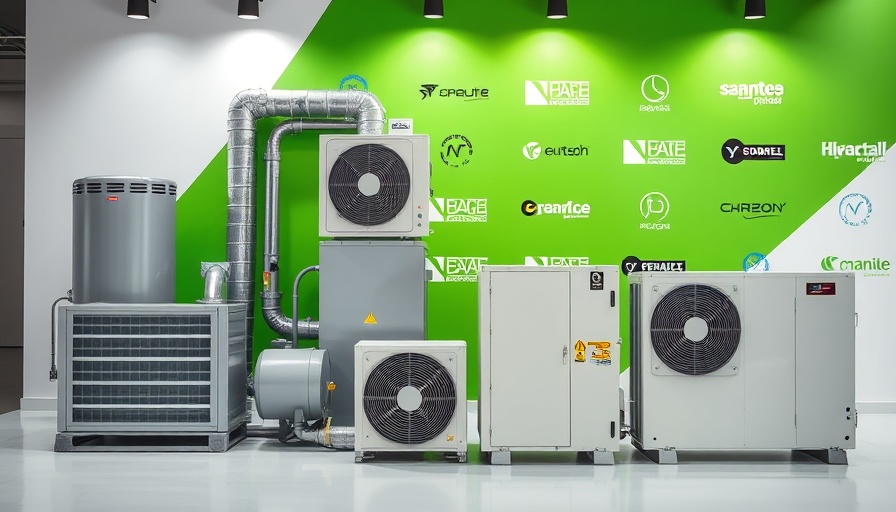
The Ultimate Guide to Building a Forever Alcohol Heater
Have you ever found yourself facing a winter power outage, shivering in your home and wishing for a reliable source of heat? Unfortunately, many people overlook the necessity of a backup heating solution, leading to discomfort and potential hazards. In today's DIY guide, we’ll explore how to construct a 'forever alcohol heater' that not only provides warmth but also has the added benefit of being eco-friendly. This ingenious solution uses isopropyl alcohol and offers a clean burn that can sustain heat for hours at a mere fraction of the cost of traditional heating methods.
In Why Didn’t We Think Of This Sooner?, the discussion dives into the fascinating world of DIY heating solutions, exploring key insights that sparked deeper analysis on our end.
Why You Need a Backup Heating System
In Houston, the summers are known for their merciless heat, but winter nights can also leave you chilled to the bone, especially during power outages. Not only can a reliable heating system keep you cozy, but it also ensures safety during emergencies. The alcohol heater we’ll be building today can serve as a cost-effective backup, using simple materials typically found at local hardware stores, such as Home Depot or Lowe's.
Materials You'll Need: An Easy DIY Project
Building your heater is not only an engaging activity but also a lesson in resourcefulness. Here’s a quick list of materials required:
- Large mason jar with a metal lid
- 1/2 inch and 3/4 inch copper pipes
- Carbon felt (a heat-resistant material)
- Pipe cutter (or grinder)
- Drilling tools for making holes
- JB Weld (epoxy for sealing)
- Isopropyl alcohol
- Zip ties or wire for assembly
Step-by-Step Instructions: Assemble Your Heater
To break it down, the process involves cutting the copper pipes to appropriate lengths, adding holes for airflow and fuel absorption, and finally assembling everything neatly. Here are some steps to follow:
- Measure and cut the copper pipes to create a vapor path for the isopropyl alcohol.
- Ream out the pipes to ensure smooth edges that don’t catch on the carbon felt.
- Create holes in the top to allow for airflow which helps with combustion.
- Assemble the parts, ensuring the carbon felt is soaked before using the heater.
This DIY project can not only provide heat but can also be a conversation starter among friends or family who might be curious about your skills and the preparation you've undertaken.
Future Predictions: Rise of DIY Solutions
As extreme weather patterns become more commonplace, the DIY community is likely to grow, with more homeowners preferring self-sufficient solutions. This alcohol heater is just one example of how creativity can tackle everyday challenges. Having a backup heat source during winter power outages will likely become a standard practice for those who value safety and preparedness.
Safety First: Always Be Prepared
It goes without saying that safety should be your number one priority when dealing with any kind of homemade heating device. Always have functioning smoke and carbon monoxide detectors installed in your home, especially when using a system that involves flames. Additionally, familiarity with the operational instructions of your heater ensures that you utilize it safely.
What If You Need Emergency HVAC Repair?
While the homemade heating solution presents a fun project, nothing can fully replace your conventional HVAC system. In the event of a malfunction, it's crucial to know the options available to you in Houston. Searching for affordable HVAC services in Houston isn't hard when you know where to look. Websites can guide you to the best HVAC contractors who offer emergency HVAC repair, routine maintenance, and professional service.
In Conclusion: Empower Yourself
By engaging in this DIY heating project, you're not just making preparations for potential winter emergencies; you're also embracing a mindset of self-sufficiency. Whether you're a seasoned DIYer or just starting, this alcohol heater project can empower you to tackle not just heat-related challenges, but a range of home improvement tasks. If you’re facing HVAC issues, don’t hesitate to reach out to reliable air conditioning companies in Houston. Equip yourself to face this winter confidently!
 Add Row
Add Row  Add
Add 




Write A Comment